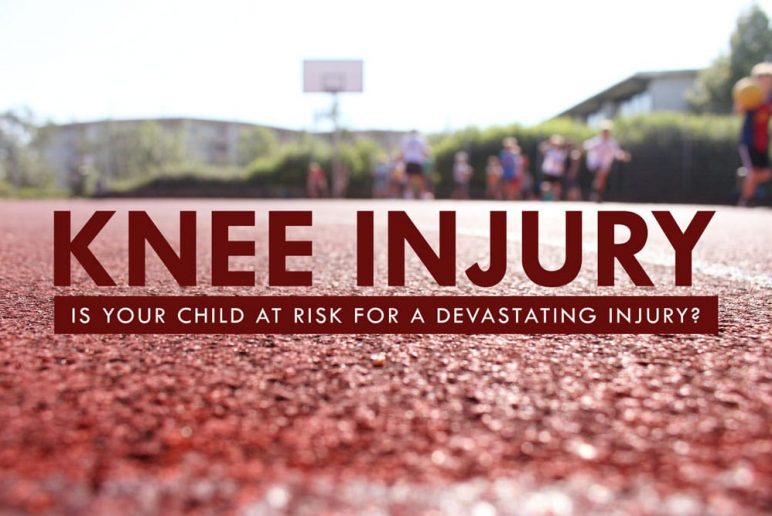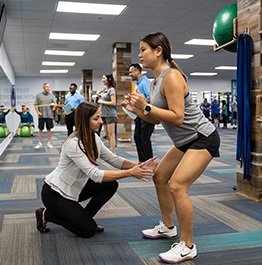
Is Your Child At Risk For a Devastating Knee Injury?
August 04, 2015One of my passions is taking care of athletes with lower extremity injuries. I developed this passion from working through my own knee injuries associated with sports and from soccer injury prevention programs for my niece as she was growing up. I can now incorporate these fundamental methods as I coach my sons’ soccer practices.
Our practice has had a very high level of success when it comes to athlete turnover rates. We truly enjoy rehabilitating athletes; however, it still breaks my heart when I see young athletes experience devastating injuries. I encourage our patients and their parents to look at the silver lining. Rehabilitation is a character building experience. It requires a lot of discipline and effort to get back on the field after an injury. I cannot tell you how many physical therapists and orthopedic surgeons found the passion for their careers because they went through their own surgery and rehabilitation. I now feel blessed for experiencing the injuries I had. Recovery was something that helped me realize that I am able to accomplish anything that I put my mind to, and gave me exposure to my career path as a physical therapist.
Preventing Injuries
However, the tough pill to swallow is that many of these injuries are preventable. Despite the “benefits” of the journey through rehabilitation, I still believe it is better to try and prevent as many injuries as possible. There are significant long term side effects associated with sports injuries, one of the most significant effect is arthritis. Once a young athlete completes the rehab journey, we do provide tools to help reduce the risk of re-injury.
More often than not, the athletes we rehab return to their sport in better shape than before they got hurt. Why? Generally it is because the athlete was vulnerable to being injured in the first place. He or she had muscle imbalances that “set them up” to be injured.
There is a significant rise in youth sports injuries for many reasons. But, what is more staggering to me is that there are not more injuries. When I watch youth sports I can’t help but notice the mechanics of the athletes. I notice their vulnerabilities when they run, cut, squat, and jump. I can see “future patients” at any soccer field I travel to throughout Orange County. This is not exclusive to youth sports. I have worked with college soccer teams and even national team players. It is amazing how vulnerable their knees are to injury.
Considerations for Female Athletes
This is especially a concern for female athletes particularly in sports that have a high demand on the lower extremities like: soccer, basketball, gymnastics, and even tennis. If there is a high volume of cutting and jumping, there is a higher risk of devastating knee injuries. Many studies have demonstrated that female athletes in soccer and basketball are 4-8 times more likely to tear their ACL than their male counterparts. Multiple reasons have been proposed for this but the most accepted theory is that there are certain neuromuscular differences between male and female athletes during and after puberty years. Females have a tendency to rely more on their quadriceps in these sports versus their hips. This is seen by their upright posture with running or when their knees collapse toward the center of the body during squatting or jumping.
How do I know if my child is at risk?
You can come in for a FREE full screening at our practice. (Sign up below!) Or you can even try this quick screen with 3 exercises: single leg squat, step down, drop jump. Check out this video to learn how to perform these quick tests on your child or even yourself by doing them in front of a mirror.
Fortunately, research shows that the incidence of these injuries can be significantly reduced with specific training programs. An athlete can be trained to improve their squat, cutting, and jumping mechanics. These studies have demonstrated a reduction in ACL tears among female athletes by 60-87%. If you are interested in receiving help to decrease your child’s risk of injury (or even your own if you are still paying), call us. We can help.
Want a Free Screening?
Sign up for a free assessment if you need help assessing your injury:
Reader Interactions
Leave a comment
You must be logged in to post a comment.


